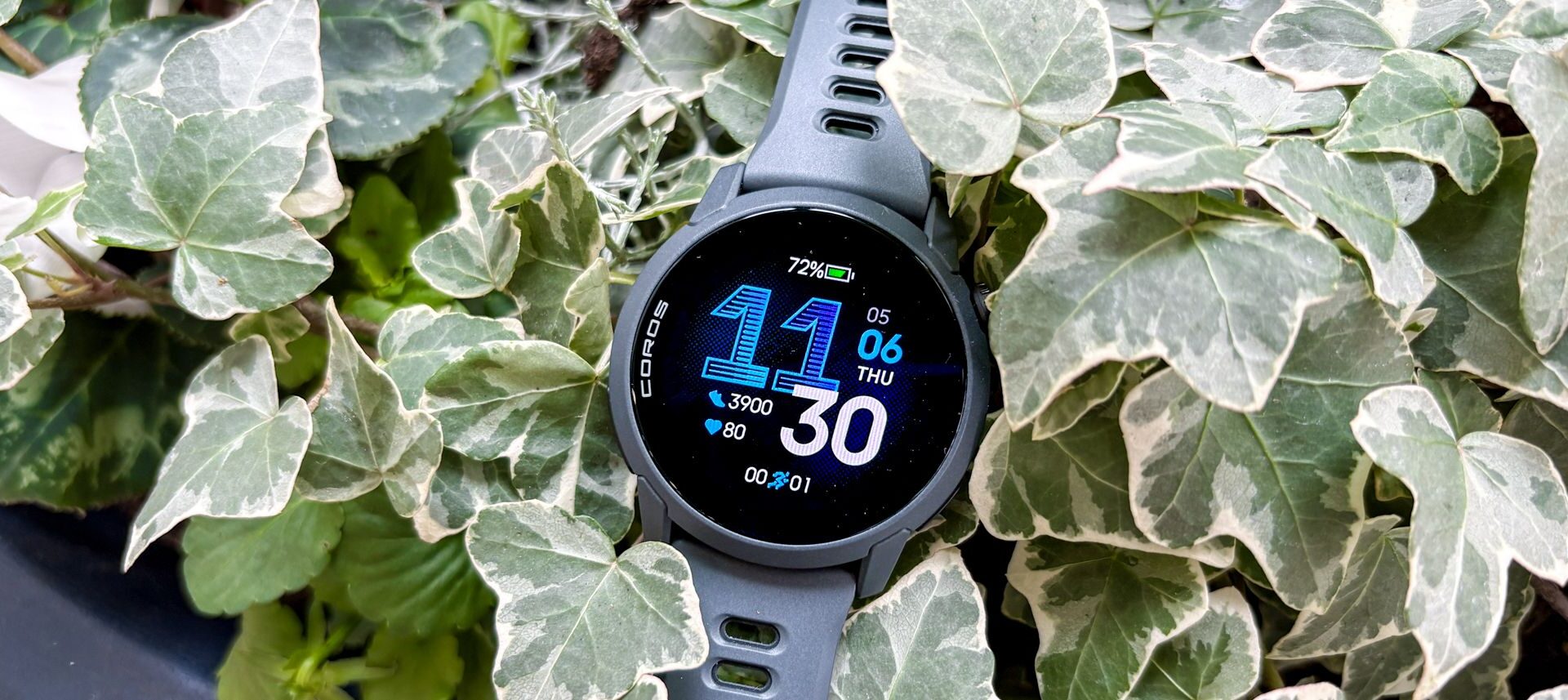They say good things come in small packages, and that’s certainly the case with the Coros Pace 4. It’s one of the smallest and lightest sports watches I’ve ever tested, but still offers all the essential features endurance athletes need.
The main upgrade on the Coros Pace 3 is the new AMOLED display on the watch, which hasn’t come at the cost of battery life — the Pace 4 is impressively long-lasting given its small design and bright screen.
I’ve run, cycled and done a variety of other workouts with the Coros Pace 4 in the 10 days I’ve had it ahead of its launch, and it’s proved to be an accurate and useful training partner. It’s one of the best sports watches available and one that offers better value than most rivals too.
Coros Pace 4 review: price and availability
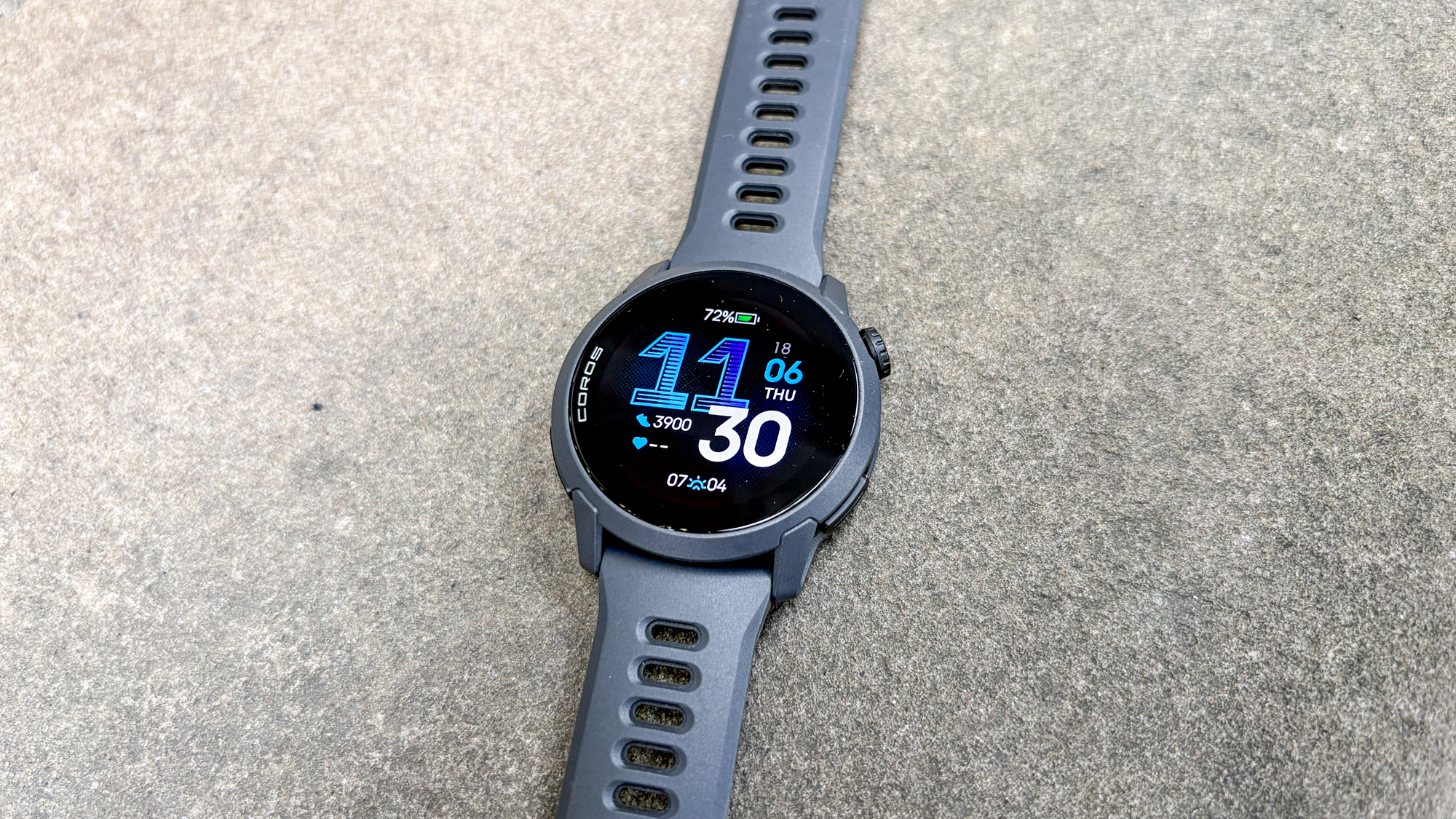
(Image credit: Future)
The Coros Pace 4 launched on 10 November 2025 and costs $249 / £229, meaning that it sits in between the Coros Pace 3 and Coros Pace Pro on price. Both of those watches have had their prices adjusted to account for the new watch, with the Pace 3 costing $199 / £199 and the Pace Pro $299 / £299.
At $249 the Pace 4’s main competitors from other brands are the Suunto Run and the Garmin Forerunner 165, both of which are also lightweight AMOLED sports watches that impressed me during testing.
Coros Pace 4 review: specs compared
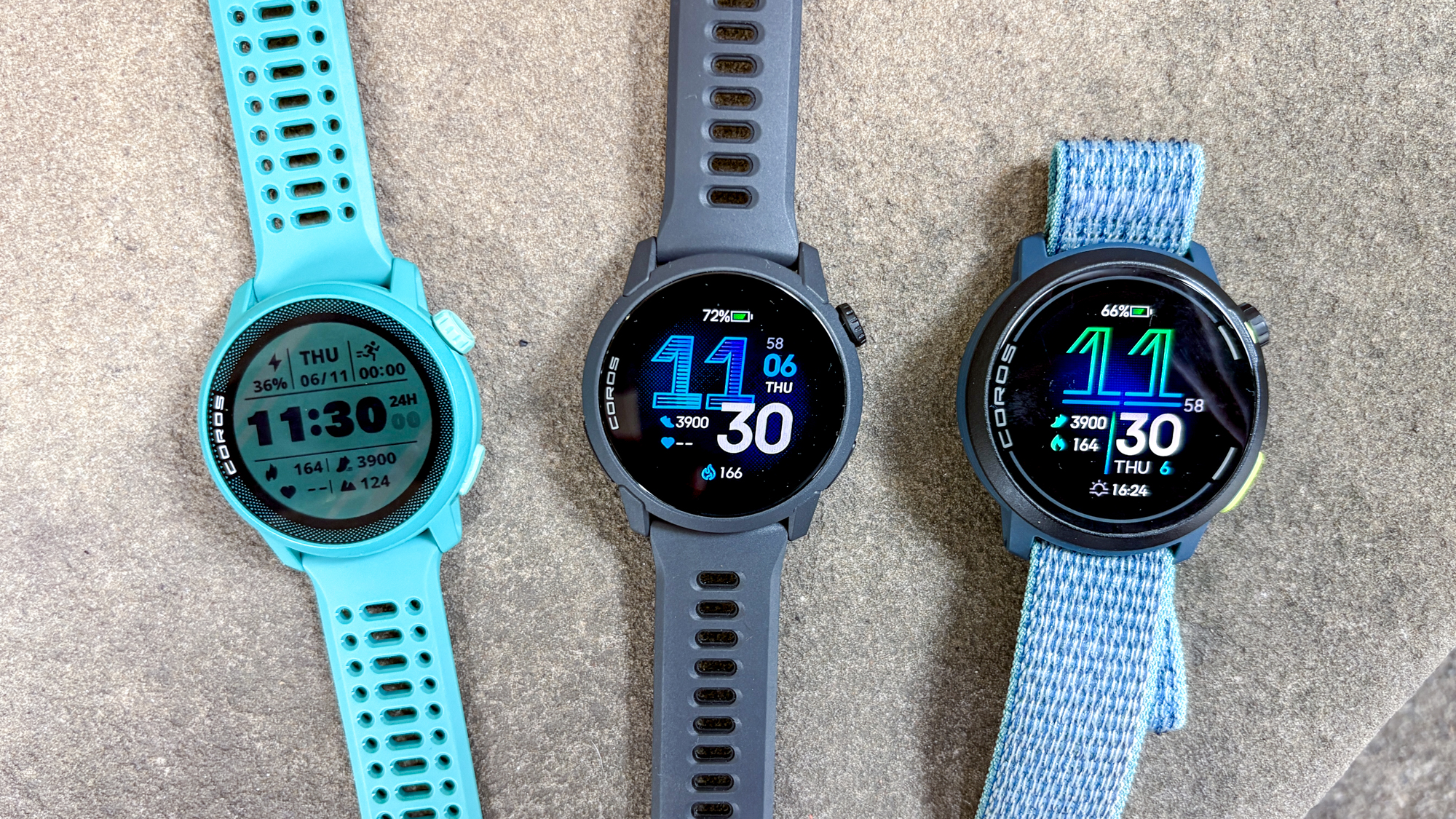
(Image credit: Future)Swipe to scroll horizontallyRow 0 – Cell 0
Coros Pace 4
Coros Pace 3
Coros Pace Pro
Price
$249 / £229
$199 / £199
$299 / £299
Size
43.4 x 11.8mm
41.9mm x 11.7mm
46mm x 14.15mm
Weight
32g with nylon band
30g with nylon band
37g with nylon band
Display
1.2in AMOLED
1.2in MIP
1.3in AMOLED
Case material
High-strength polymer
Fiber reinforced polymer
Fiber reinforced polymer
Screen material
Mineral glass
Mineral glass
Mineral glass
Water resistance
5ATM
5ATM
5ATM
Battery life (watch mode)
19 days (6 days always-on)
15 days
20 days (6 days always-on)
Battery life (dual-band GPS)
31 hours (24 hours always-on)
15 hours
31 hours (24 hours always-on)
Storage
4GB
4GB
32GB
Navigation
Breadcrumb
Breadcrumb
Offline maps
Mic
Yes
No
No
Coros Pace 4 review: design and display

(Image credit: Future)
The Coros Pace 4 is built to be as lightweight and small as possible and as a result it’s very comfortable to wear 24/7, even for those with skinny wrists. It’s very thin and weighs just 27g/0.95oz without its band, and while its all-plastic build lacks the premium feel of watches with metal bezels, I like the look of the Pace 4 and was happy to wear it everywhere.
There are three buttons on the watch, one of which is a digital dial and one of which is the new ‘Action’ button that Coros has also added to the Coros Apex 4 and Coros Nomad watches this year.
This button can be set to activate a shortcut during activities, with the most useful function for me being the ability to quickly switch between the navigation and stats pages in your sports mode. This doesn’t bring up a map on the Pace 4, but you still get a breadcrumb trail of where you’ve been, plus your route if following one.
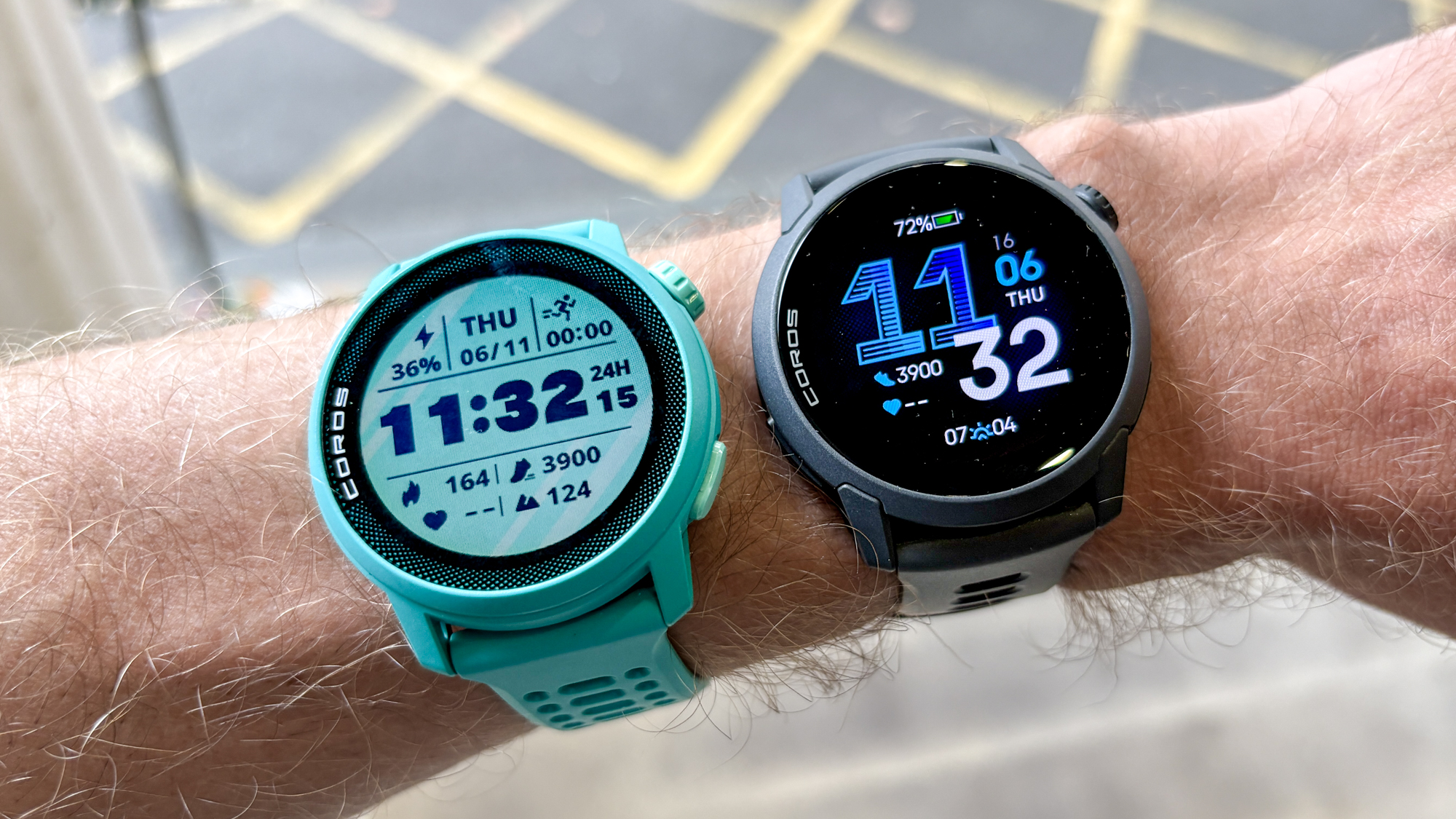
(Image credit: Future)
The Pace 4 has a 1.2in AMOLED display that’s considerably brighter than the MIP screens used on most of the Coros range. It’s not as bright as the screens on the best smartwatches and Garmin watches, but clearly visible in all conditions, and makes the Pace 4 more appealing to use outside of workouts too.
A raft of useful sensors are packed into the Pace 4’s diminutive case, including a barometer and pulse oximeter, and a GPS chipset capable of multi-band tracking. The watch has a 5 ATM waterproof rating, and has a microphone you can use to record voice notes, which is another upgrade on the Pace 3 and Pace Pro watches.

(Image credit: Future)
You don’t get a charging cable in the box for the Pace 4, instead there’s a converter that you can attach to any USB-C cable to plug into the watch. This converter comes with a handy keychain attachment, so you always know where it is (hopefully).
The Pace 4 uses 22mm bands and it’s easy to swap them in and out. It comes with either a silicone or nylon band, and I’d opt for the latter myself, as they are more comfortable and lighter than silicone. That said, swimmers might prefer a silicone band because they dry faster.
Coros Pace 4 review: sports tracking and training analysis

(Image credit: Future)
The Coros Pace 4 largely offers the same sports tracking as you get across watches in the Coros range, though it lacks some of the outdoor sports modes available on adventure-focused devices like the Nomad.
You can customize all these sports modes to show the stats you want, and the new mic can be used to record voice notes about your workout after you’ve finished, which are automatically transcribed in the Coros app.
I keep a separate training log myself for this purpose, so being able to do this all within the Coros app is handy, but if you never plan on using the feature it’s not intrusive.
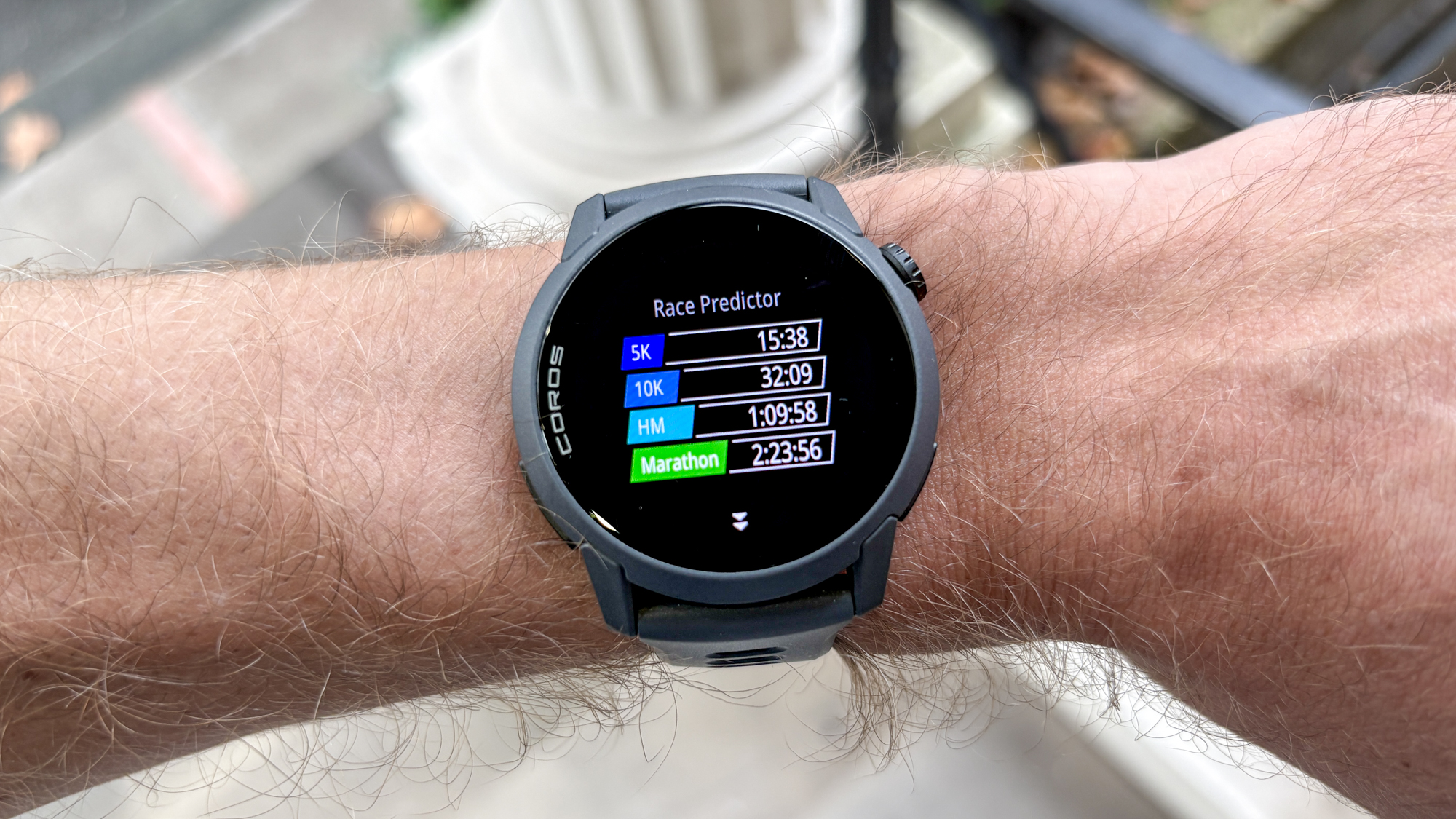
(Image credit: Future)
The training analysis on the watch is the same as you get on all Coros watches, which is good in that you don’t get fewer features than those who buy the top-of-the-range Coros Vertix 2S.
I find the analysis offered by Coros to be useful and accurate in gauging things like my threshold pace when running and estimated race times. It doesn’t offer as much guidance as Garmin watches, and there’s no training readiness feature or similar, but the key info on your training load is available and well presented using colorful graphs.
Coros Pace 4 review: GPS & heart rate accuracy
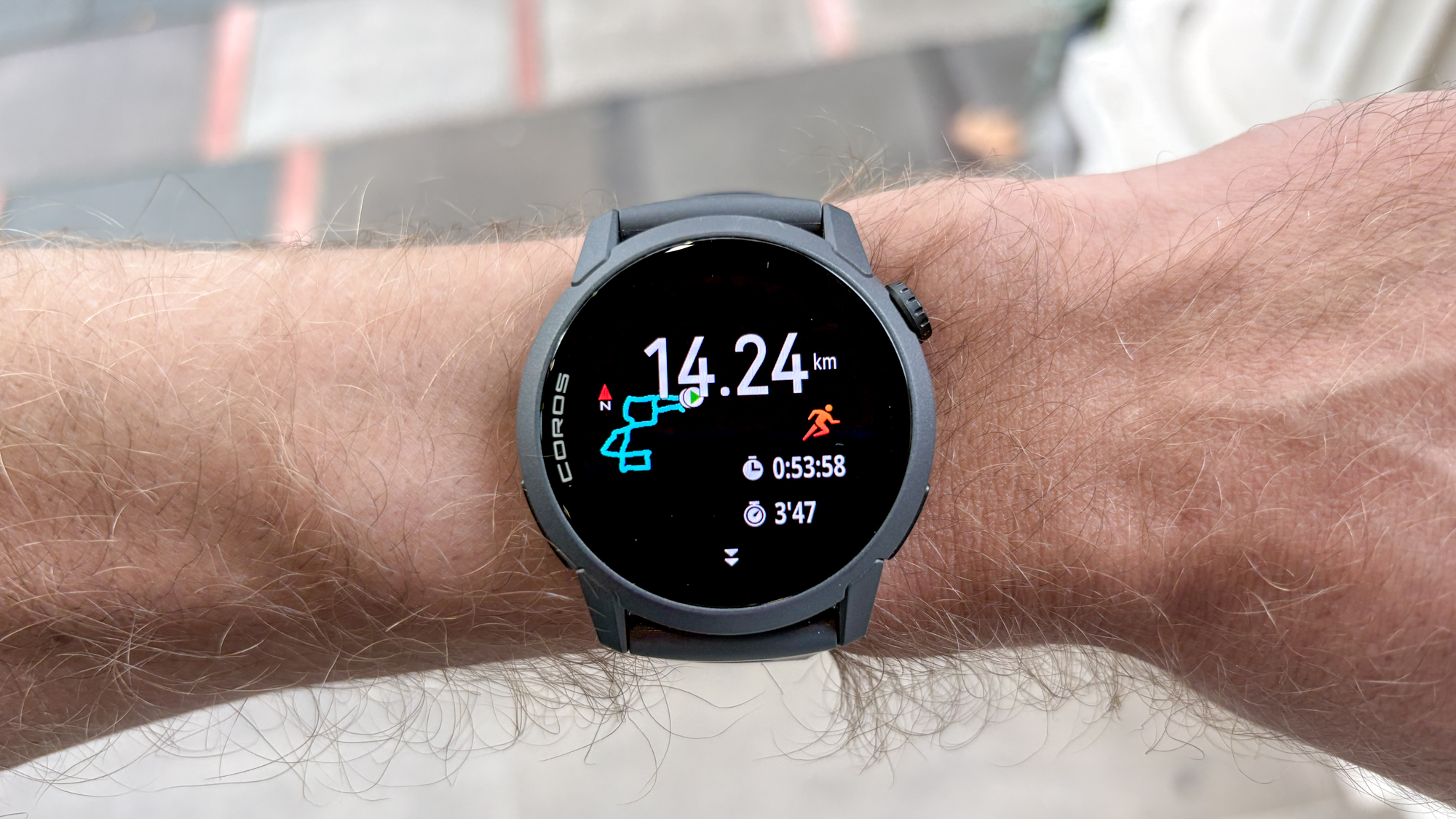
(Image credit: Future)
I used the Pace 4 in the most accurate multi-band GPS mode throughout testing, and checked its GPS tracks after runs and compared them with tracks from watches I’ve found reliably accurate like the Garmin Forerunner 970 and Suunto Vertical 2.
Throughout testing, the GPS accuracy on the Pace 4 has been excellent for me, with no worrying deviations from the route I ran showing on my GPS tracks. I’ve been able to rely on the watch for accurate lap pace and distance stats during workouts as a result.
To check the heart rate accuracy I compared the readings of the watch to those of a chest strap monitor, which are more reliable than the optical sensors on watches.

(Image credit: DC Rainmaker Analyzer)
The Pace 4 did well on this front too. Although it wasn’t always exactly in line with the chest strap, it was usually close, and the only time I saw large, incorrect spikes in the heart rate reading was at the start of runs or after a long pause, and the readings quickly corrected themselves.
Image 1 of 2
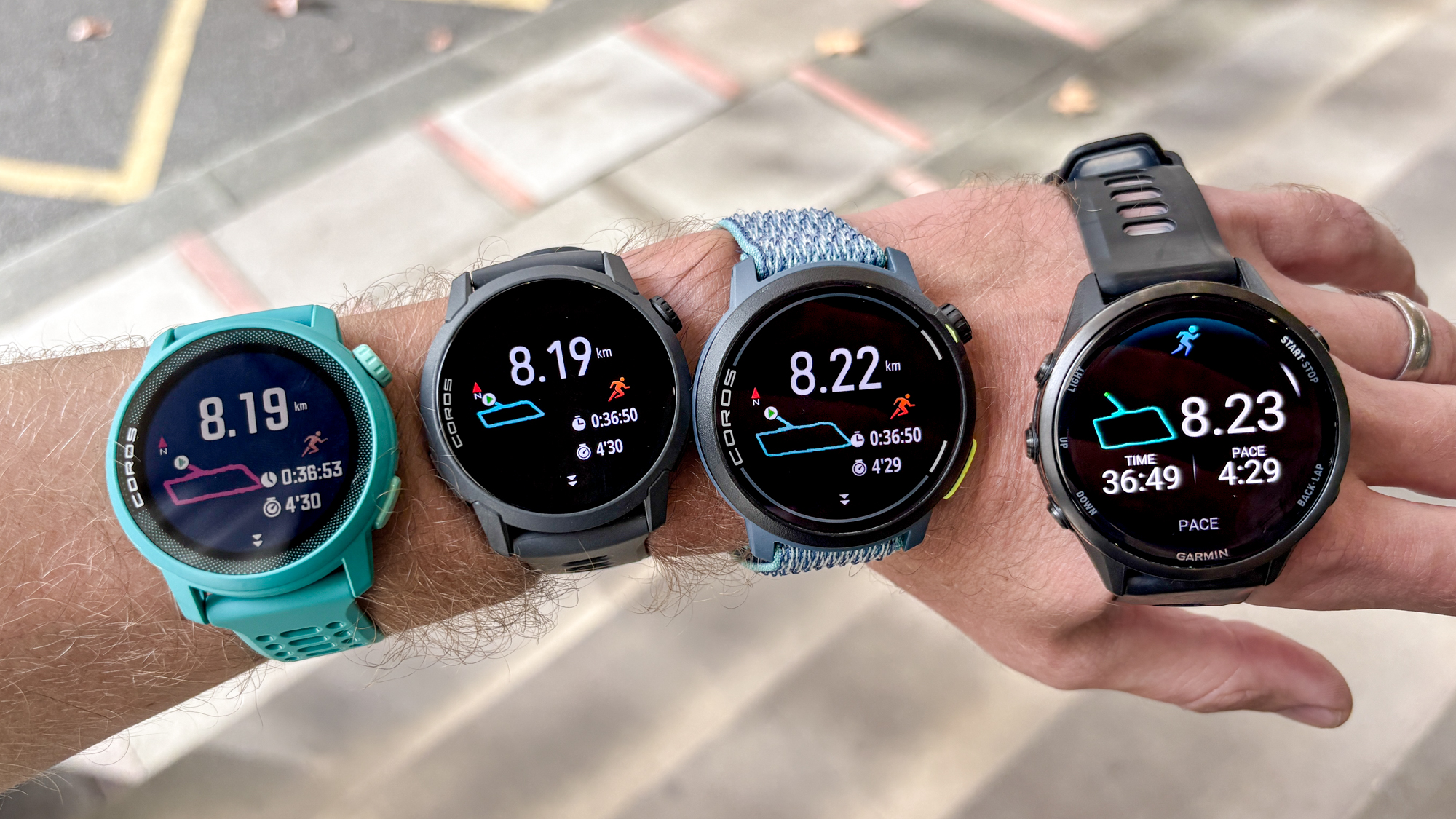 (Image credit: Future)
(Image credit: Future) (Image credit: Future)
(Image credit: Future)
I did one run where I used the Coros Pace 4, Coros Pace 3 and Coros Pace Pro at the same time, along with the Garmin Forerunner 970 connected to a chest strap, and all of the watches were very close on both heart rate accuracy and the GPS tracks they produced.
Coros Pace 4 review: battery life
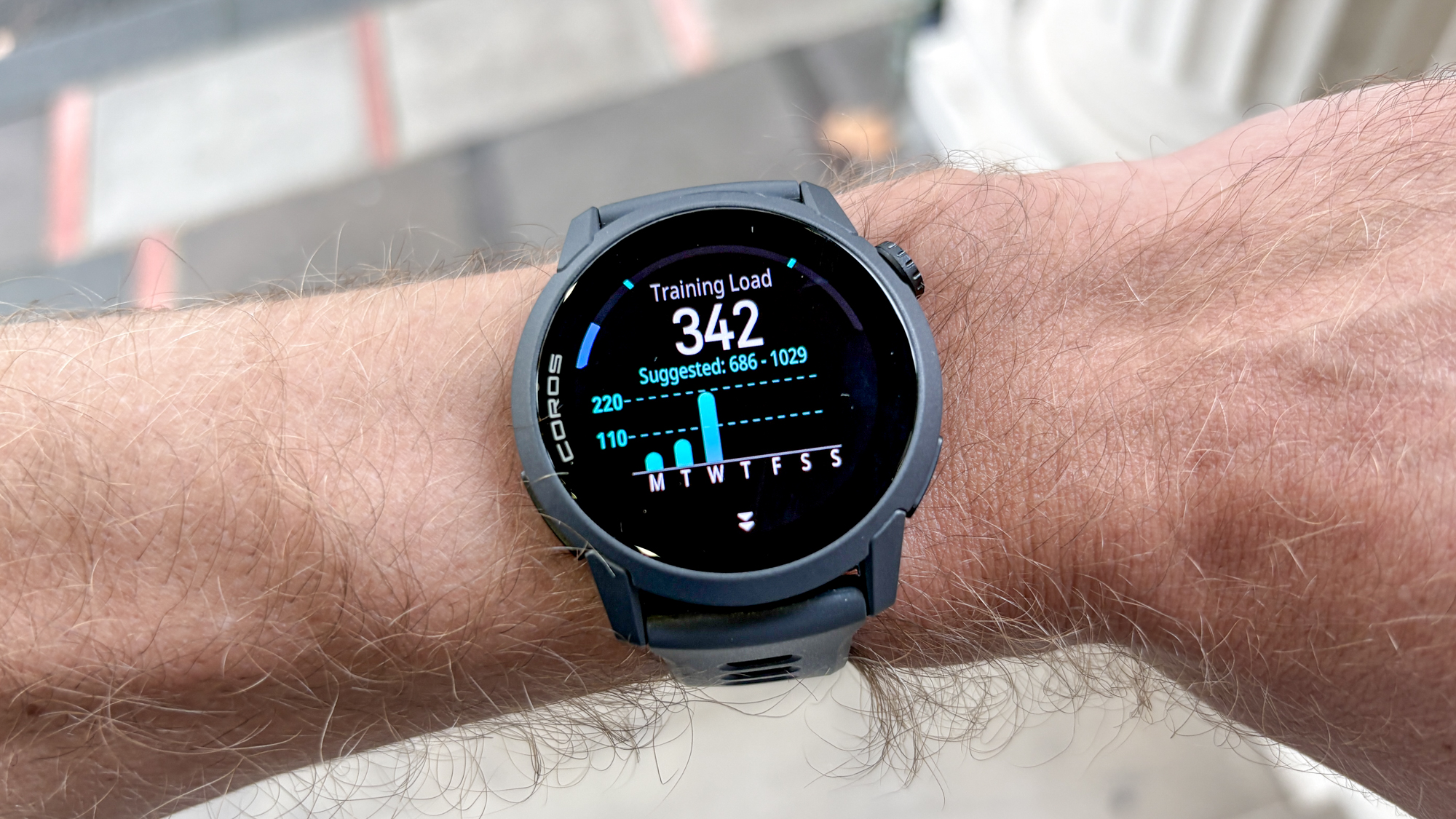
(Image credit: Future)
For a small AMOLED watch the Coros Pace 4 offers impressive battery life, lasting up to 19 days on a charge, or up to six days with the screen always-on. The GPS battery life is also very good — it offers 24 hours of tracking in multi-band mode with the screen always on.
I had the screen always-on and ran every day I had the watch, and it lasted me four to five days on a charge. Since I turned the screen to raise-to-wake outside of workouts, the Pace 4 has drained at a rate of just over 10% a day.
One thing that has helped boost my battery life is only taking heart rate readings every 10 minutes outside of workouts — you can set the tracking to be on 24/7, which might knock a day off your battery life, but I don’t find I need real-time tracking when I’m not training.
While you can get longer battery life from larger AMOLED watches, the Pace 4 offers longer GPS tracking in particular than rivals like the Suunto Run and Garmin Forerunner 165.
Coros Pace 4 review: activity and sleep tracking
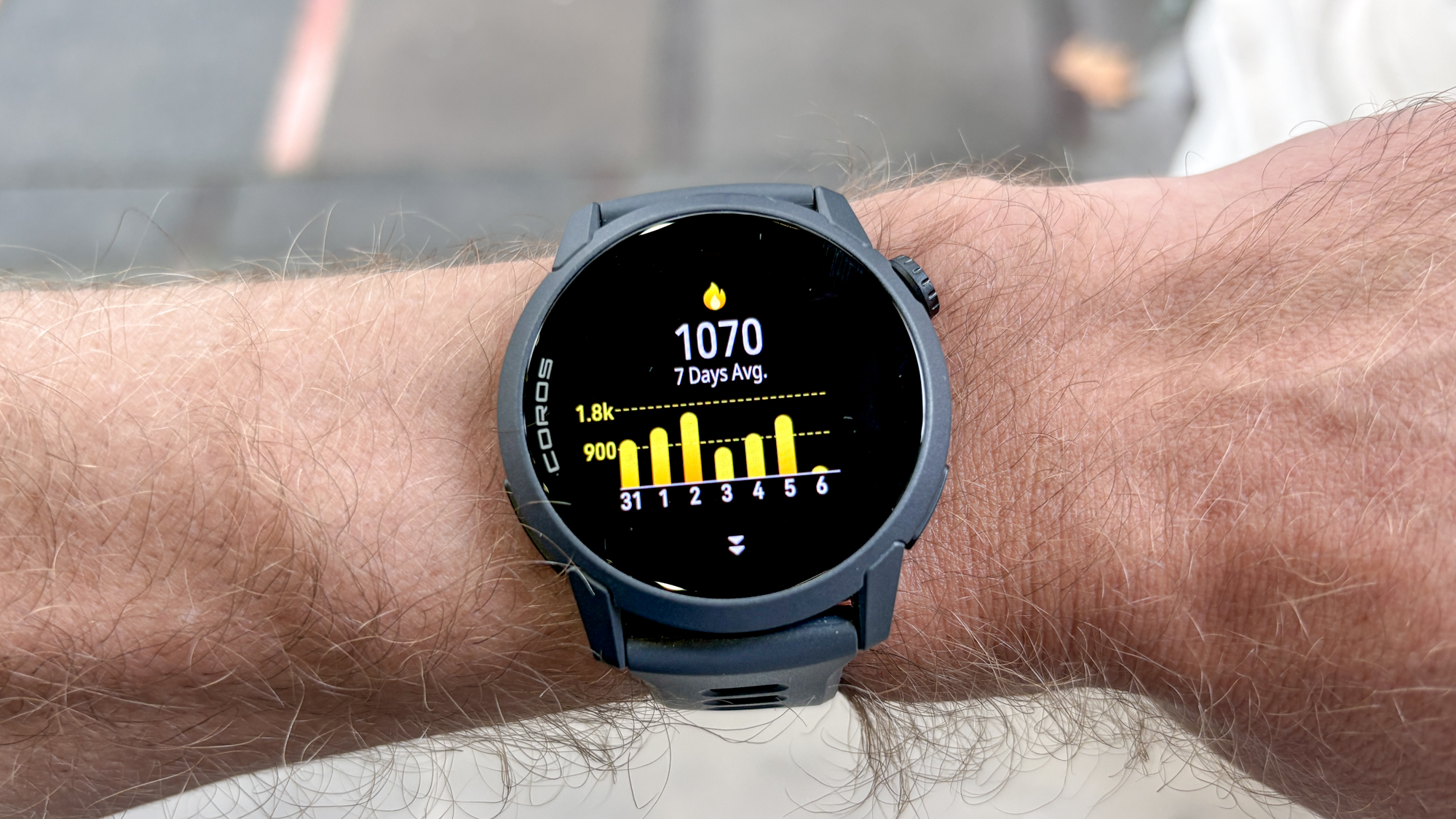
(Image credit: Future)
The Coros Pace tracks your steps, active calories and floors climbed throughout the day, and I’ve found its step counts to be in line with Garmin and Apple watches in my testing. You also get graphs showing your last seven days for each of these stats on the watch.

(Image credit: Future)
I’ve had some ups and downs with the sleep tracking on the watch. Mostly it seems pretty good at spotting when I fall asleep and wake up, but one night it missed half the time I was asleep and logged that I’d just had two short naps. On the plus side, it’s such a small watch that it never felt annoying to wear overnight, unlike bulkier devices like the Apex 4.
The Pace 4 also tracks your overnight heart rate variability and shows if it’s within your normal range, which you can use as a guide to how ready your body is for hard training that day, and to potentially spot when you’re getting sick or stressed in some way.
Coros Pace 4 review: smart features and navigation
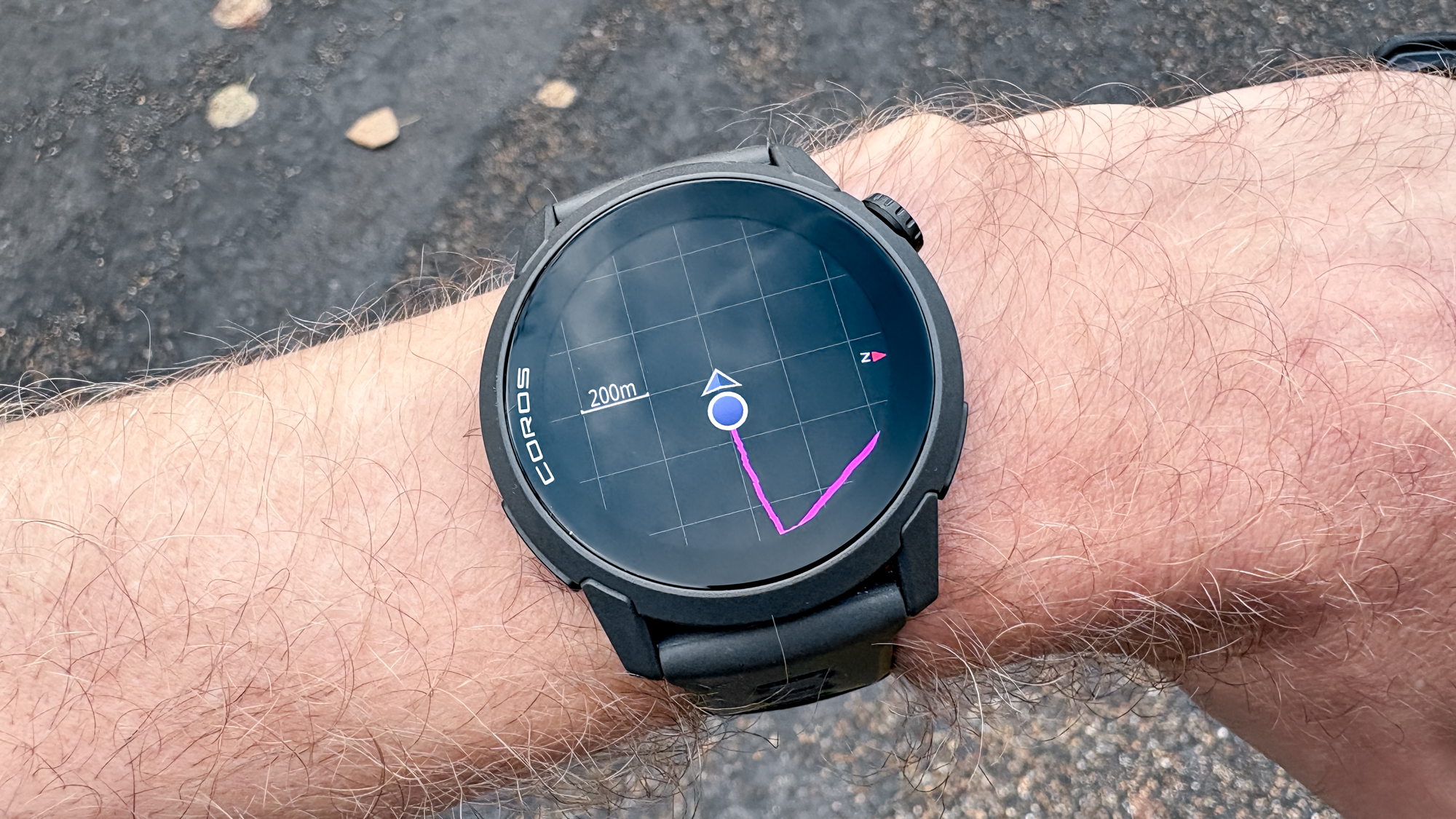
(Image credit: Future)
The Coros Pace 4 has some basic smart features like a weather forecast widget and music storage for MP3 files, but you can’t link it with a streaming service, and it also currently doesn’t offer music controls for your phone.
Its navigation tools are also limited, in that it doesn’t offer the offline maps you get on more expensive Coros options like the Pace Pro and Nomad watches. You do get breadcrumb navigation though, and can follow routes or get directed back to the start of your activity.
Should you buy the Coros Pace 4?
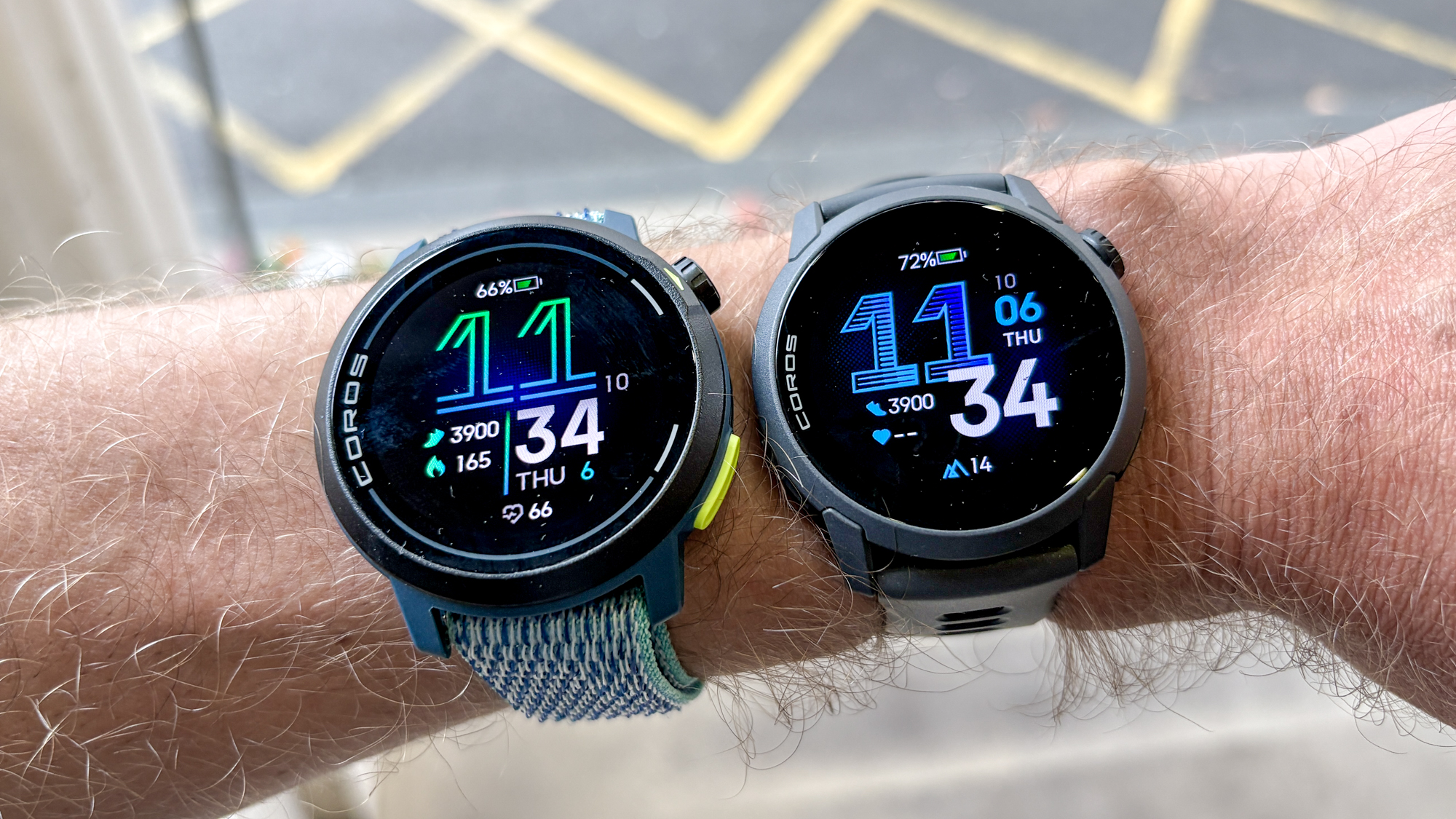
(Image credit: Future)
The Coros Pace 4 is an excellent sports watch and a great pick for runners of all levels who prefer a smaller and more affordable device.
The Coros Pace 4 is an excellent sports watch and a great pick for runners of all levels who prefer a smaller and more affordable device. It’s the kind of watch I’d pick up myself as a marathoner, though the upgrade to the Pace Pro to get maps and a slightly larger display would be tempting.
The Suunto Run is another excellent value AMOLED option for runners, but I find the Coros user interface and training analysis easier to use, and the battery life is better on the Pace 4, too.
Garmin’s best option in this price range is the Forerunner 165, which has more smart features but doesn’t have mutli-band GPS or a multisport mode, and lacks many of Garmin’s training analysis features including training readiness. The Garmin Forerunner 265 would be an appealing alternative to the Coros Pace 4 if it drops to a similar price in sales, however.
If you don’t want an AMOLED display, the Coros Pace 3 is an easy alternative to recommend since it’s a little cheaper than the Pace 4 and offers most of the same features with a MIP screen.
I prefer an AMOLED watch myself, and the Pace 4 impressed me greatly with its design, performance and value throughout testing. It’s a late highlight of 2025.

Follow Tom’s Guide on Google News and add us as a preferred source to get our up-to-date news, analysis, and reviews in your feeds.

